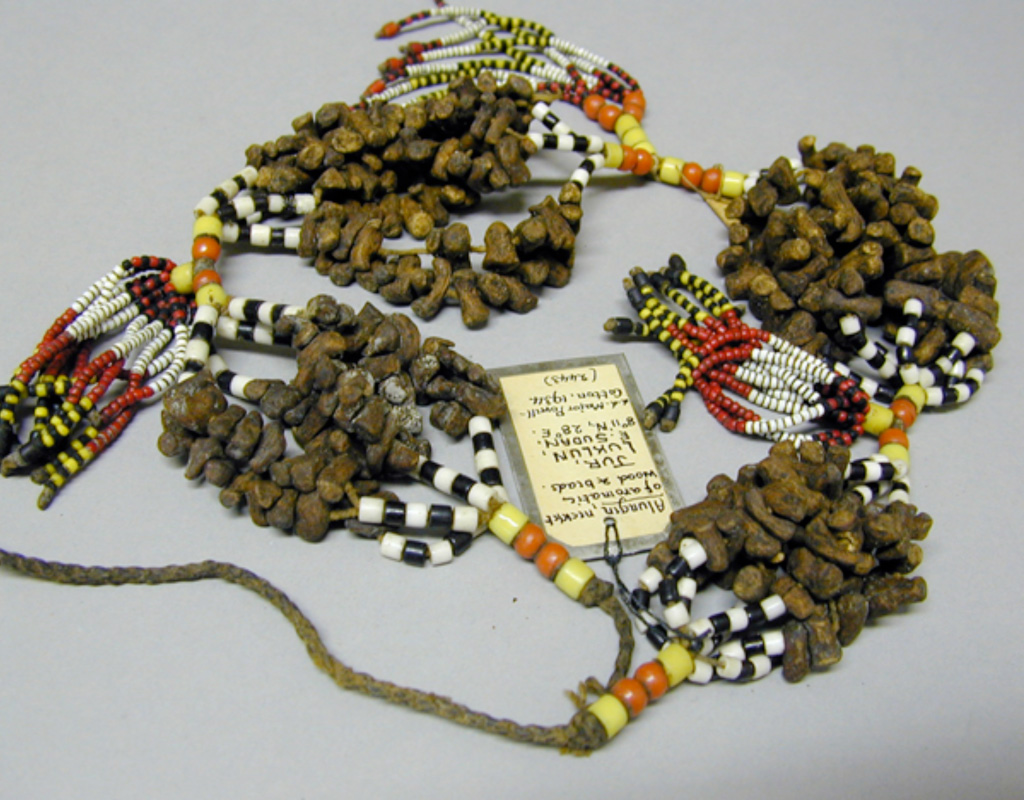Scented necklaces
(Rumbek) Jur people, Sudan
 scented_necklaces
scented_necklaces
This necklace is made from seven hide strands twisted together to form a cord, which has then been strung with a variety of aromatic wood pieces and coloured beads.
The wood may come from the Cyperus plant, a type of sedge that resembles a reed or rush. This plant has been used in the Egyptian medicinal incense kyphi since ancient times.
The beads are trade beads and are known among the Jur as alungen. They resemble plastic but were probably made through the process known as 'prosser-moulding'. This technique moulds a milk-paste under high pressure before firing, giving the beads the appearance of being glass or porcelain, although they are actually synthetic. Such beads were made in France, Germany and the Czech Republic and traded all over the world.
Nearby among the Pokot people of Kenya, girls and young women wear a similar sort of scented necklace underneath their ordinary heavy disc-type necklaces. One shrub used for this purpose is known as lopara; the girls cut off thin twigs then strip away the bark that they squeeze into balls that can be strung together. The anthropologist Jean Brown noted in the 1970s that lopara necklaces were only worn “for ceremonies and when going with a boyfriend”. A more everyday scent was asachait, gleaned from a shrub bearing small but sweet- and strong-smelling yellow flowers.
This particular necklace was collected in 1933 by Percy Horace Gordon Powell-Cotton (1866–1940) and his wife Hannah whilst on a hunting trip. Powell-Cotton travelled widely in Asia and Africa between 1887 and 1939, and was involved in 28 expeditions to collect zoological and ethnographic specimens. His daughters Antoinette and Diana were also collectors and the Pitt Rivers Museum now houses more than 1000 objects collected and donated by members of the family. The family home at Quex Park near Birchington in Kent is still home to the Powell Cotton Museum, which first opened to the public as a single room of curiosities in 1896.
Collected by Percy and Hannah Powell-Cotton in 1933 and donated by Percy H. G. Powell-Cotton in 1934; 1934.8.104
